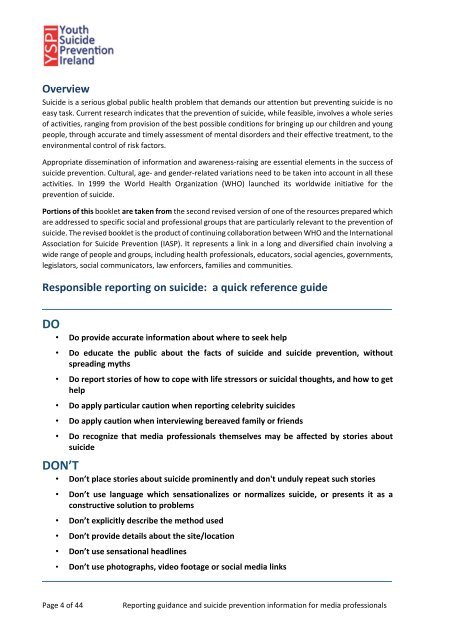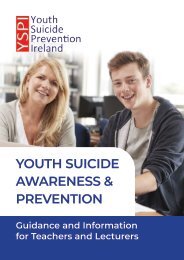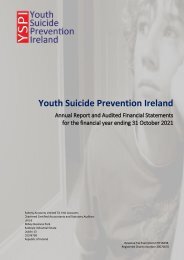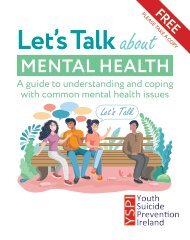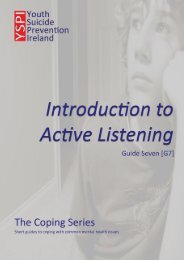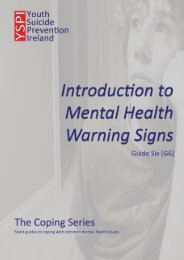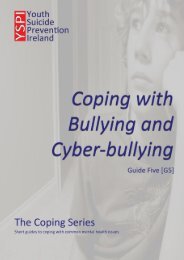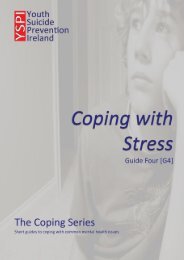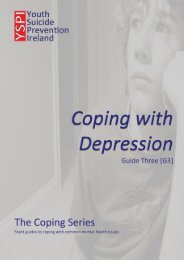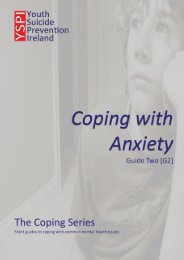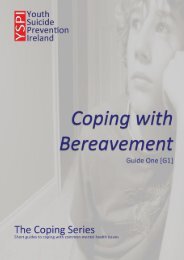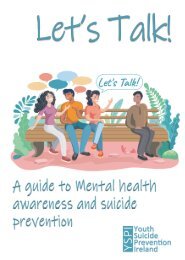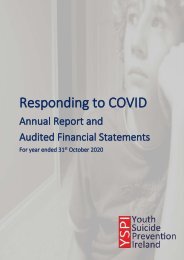Create successful ePaper yourself
Turn your PDF publications into a flip-book with our unique Google optimized e-Paper software.
Overview<br />
Suicide is a serious global public health problem that dem<strong>and</strong>s our attention but preventing suicide is no<br />
easy task. Current research indicates that the prevention of suicide, while feasible, involves a whole series<br />
of activities, ranging from provision of the best possible conditions <strong>for</strong> bringing up our children <strong>and</strong> young<br />
people, through accurate <strong>and</strong> timely assessment of mental disorders <strong>and</strong> their effective treatment, to the<br />
environmental control of risk factors.<br />
Appropriate dissemination of in<strong>for</strong>mation <strong>and</strong> awareness-raising are essential elements in the success of<br />
suicide prevention. Cultural, age- <strong>and</strong> gender-related variations need to be taken into account in all these<br />
activities. In 1999 the World Health Organization (WHO) launched its worldwide initiative <strong>for</strong> the<br />
prevention of suicide.<br />
Portions of this booklet are taken from the second revised version of one of the resources prepared which<br />
are addressed to specific social <strong>and</strong> professional groups that are particularly relevant to the prevention of<br />
suicide. The revised booklet is the product of continuing collaboration between WHO <strong>and</strong> the International<br />
Association <strong>for</strong> Suicide Prevention (IASP). It represents a link in a long <strong>and</strong> diversified chain involving a<br />
wide range of people <strong>and</strong> groups, including health professionals, educators, social agencies, governments,<br />
legislators, social communicators, law en<strong>for</strong>cers, families <strong>and</strong> communities.<br />
Responsible reporting on suicide: a quick reference guide<br />
DO<br />
• Do provide accurate in<strong>for</strong>mation about where to seek help<br />
• Do educate the public about the facts of suicide <strong>and</strong> suicide prevention, without<br />
spreading myths<br />
• Do report stories of how to cope with life stressors or suicidal thoughts, <strong>and</strong> how to get<br />
help<br />
• Do apply particular caution when reporting celebrity suicides<br />
• Do apply caution when interviewing bereaved family or friends<br />
• Do recognize that media professionals themselves may be affected by stories about<br />
suicide<br />
DON’T<br />
• Don’t place stories about suicide prominently <strong>and</strong> don't unduly repeat such stories<br />
• Don’t use language which sensationalizes or normalizes suicide, or presents it as a<br />
constructive solution to problems<br />
• Don’t explicitly describe the method used<br />
• Don’t provide details about the site/location<br />
• Don’t use sensational headlines<br />
• Don’t use photographs, video footage or social media links<br />
Page 4 of 44<br />
<strong>Reporting</strong> guidance <strong>and</strong> suicide prevention in<strong>for</strong>mation <strong>for</strong> media professionals


